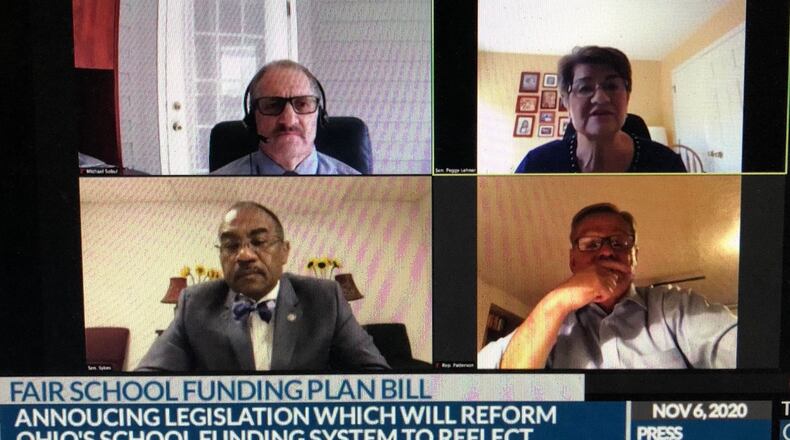“There’s probably no question I’ve been asked more frequently in my 12 years in the Ohio Legislature than, ‘When are you guys going to fix Ohio’s unconstitutional method of school funding?,’” said Ohio Senate Education Committee Chair Peggy Lehner, R-Kettering. “Ohio’s current funding formula is unpredictable, indecipherable, confusing, but most of all, inadequate and inequitable. It is long overdue for an overhaul.”
If fully funded after a proposed six-year phase-in, the new plan would eventually allocate an extra $1.99 billion in annual state funding for schools, said State Rep. Gary Scherer, R-Circleville. Ohio currently spends around $10 billion a year on K-12 education.
State Senator Vernon Sykes, D-Akron, said the bills are a framework defining a fair formula to fund schools. He said decisions on the actual dollar amounts invested (whether the plan would be fully funded) would be determined by the legislature every two years during the budget process.
Simulations of the plan say if it was passed and fully funded, almost every school in Ohio would see a net increase in state funding. Oakwood and the DECA charter school are the only ones locally listed with a very small decrease.
Some districts whose funding had been artificially capped under the current system would see huge increases if the plan was fully funded — Bethel would get an extra $5.6 million annually, Dayton and Fairborn close to $8 million and Kettering $16 million extra each year.
The legislators' first effort is to get one of the bills passed and signed into law. Lehner said they hope to accomplish that by the end of the year. Scherer said HB 305 is scheduled for hearings in the House Finance Committee on Tuesday, and Lehner said Senate hearings will begin soon.
State Rep. John Patterson, who built the original version of HB 305 over a span of two years with now-Speaker of the House Bob Cupp, said he thinks the bills have bipartisan support as a large number of legislators have signed on as co-sponsors.
The funding formula arrives at its base cost of instruction by calculating teacher staffing (one regular classroom teacher per 20 kindergartners or 27 high schoolers), and other ratios for support personnel, substitutes and school leadership. The bill also mandates studies to determine how much money per pupil should be allocated for things like technology support, supplies and co-curricular efforts.
Among other major changes, the bill would directly fund charter schools and the private school voucher program, rather than passing that money through school districts. Those districts have argued for years that the pass-through system unfairly hurts them financially.
The funding plan would retain and expand “categorical” funding earmarked for certain areas such as special education, economically disadvantaged students and students who are learning English as a second language.
The decades-old DeRolph court hearings that ruled Ohio’s school funding unconstitutional blamed inequities in the property tax-based system of funding. The new bills calculate each school district’s local funding share based on a combination of a community’s property values (60%) and the income levels of its residents (40%).
Legislators acknowledges that passing and implementing the plan will be harder given state budget pressure created by the COVID-19 pandemic. But they said fixing school funding is a high priority.
“There are going to be bumps in the road, but if not now, when? And if not us, who?” said Patterson, D-Jefferson.
About the Author

